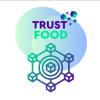Climate Action, Energy Transition, and Blockchain in Food Supply Chain (TRUSTFOOD)
The course ‘Climate Action, Energy Transition, and Blockchain in Food Supply Chain’, designed within the scope of the EU-funded TRUST-FOOD project, offers a comprehensive overview of the Climate-Energy-Food nexus. The goal of the course is to master how Blockchain can be a lever for climate action and energy transactions in the food supply chain, and to acquire skills to design and implement Blockchain solutions in support of net-zero transition in Food Supply chain.
The aim of the project, which is funded under the DIGITAL Europe Programme of the European Union, is to create a database of courses that support the sustainable up- and re-skilling of EU workforce, with a particular focus on SME owners, managers, and employees.
About this course
This course will equip you with a foundational knowledge of Blockchain technology for achieving climate action, energy transition, and a more sustainable food supply chain. This objective captures the essence of the course by highlighting the following key points: You’ll then explore the role of blockchain technology in monitoring, reporting, and verifying ESG and SDG performance within the food industry. The course integrates real-world case studies to help you grasp how blockchain is currently used to achieve ESG and SDG goals in the food supply chain. The course will give you the tools to confidently navigate the existing regulatory environment, and understand how blockchain can support compliance. You will also be able to analyse the impact of blockchain for ESG and SDGs on various stakeholders within the food supply chain. Finally, taking this course will enable you to anticipate future trends and potential applications of blockchain technology.
Target audience
The course is ideal for university students and graduates, business managers and business owners, agrifood company employees, as well as personnel in sectors related to food supply chains.
Learning material and resources
This course is broken down in 6 lessons and conducted in English. A quiz at the end of each lesson tests learners' understanding of the concepts introduced. Students need approximately 8.5 hours of study time to complete this course and can get a free certificate to attest their participation.


